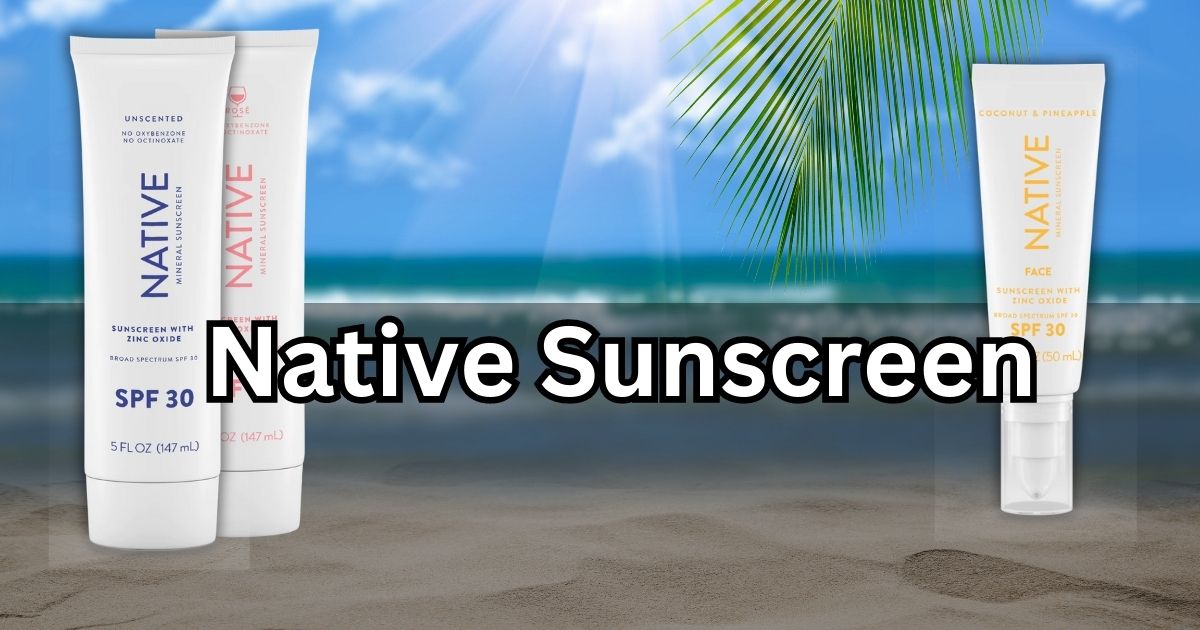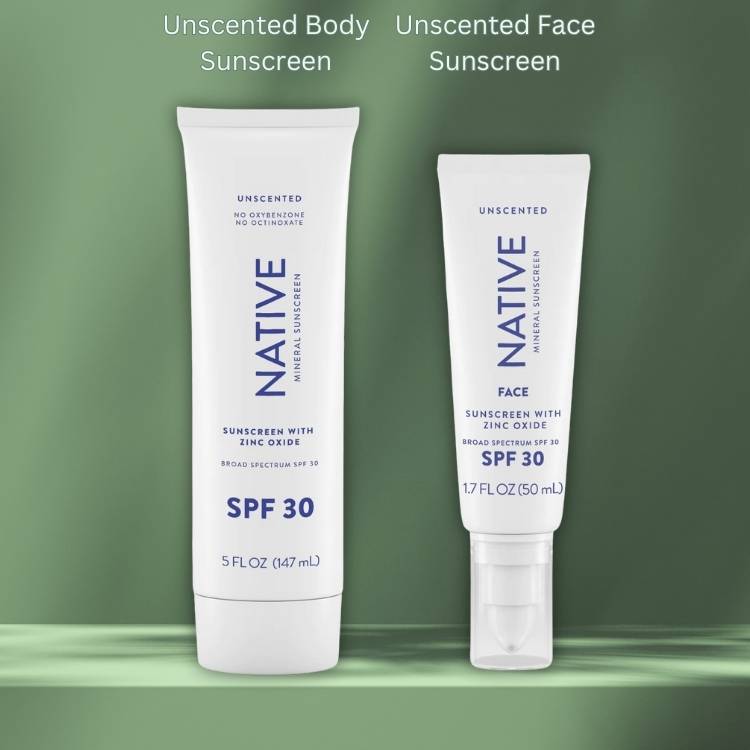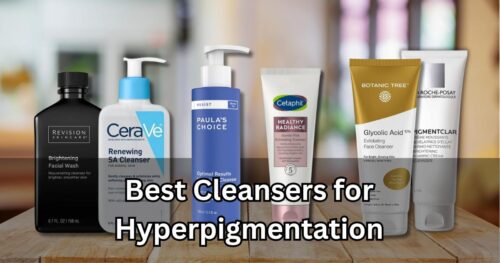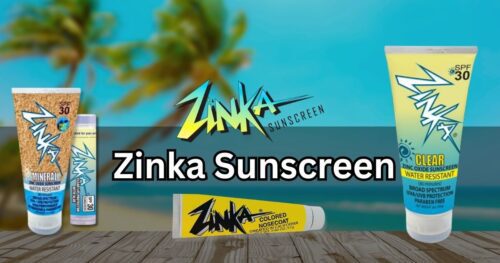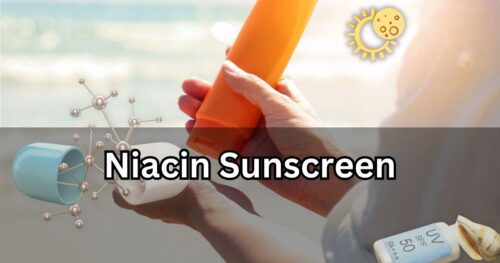Table of Contents
SPF: 30+
Type of protection: Physical
Active ingredients: Zinc oxide
Broad spectrum: Yes
Reef safe: Yes
There are plenty of sunscreens in the market, making it a daunting task to choose the product with the perfect balance of quality, cost, and safety.
Luckily we found a sunscreen that checks all the above boxes and reviewed it for you while keeping it simple.
Native sunscreen comes in many fascinating scents and an unscented version. It is the perfect blend of high-end formulation and affordability. It comes in separate sunscreens for the body and face. Both are SPF 30.
It is a broad-spectrum sunscreen, which means it blocks both UVA and UVB rays of the sun.
We took feedback from not one but numerous native sunscreen users of different ages about how they felt about the product. Most of them found it suitable and sufficient for them.
Next, we’ll tell you the key points and features that make it a unique and affordable sunscreen. Although we found it robust, we’ll also point out a few things some users didn’t like so you can make an informed decision.
Pros VS Cons
Pros
- Not greasy or oily
- The safest UV filter ingredient (Zinc Oxide) used
- Non-toxic for your skin and the environment
- Great quantity for the price
Cons
- Not water resistant
- It may leave a little white cast in darker skin tones
- Only SPF 30 is available
- Some people may be allergic to scented variations of the sunscreen

Native Mineral Body Sunscreen
Ingredients
Native mineral body sunscreen contains 20% Zinc Oxide as the main ingredient that stops the sun’s UV rays. According to research, it is the best and safest ingredient to use in sunscreen.
It physically stops and reflects the sun’s rays and does not affect the skin chemically, making it harmless to use.
💡 Fact: The non-oily shine you get after applying sunscreen is due to zinc oxide. This is because of the reflective property of zinc oxide that keeps harmful rays away.
Other ingredients include plant and coconut oils, triglycerides, and Glycerin, giving it a lotion-like consistency for easy application. They also form a skin barrier protecting from harsh environments.
Vitamin E helps protect the skin from external damage by oxidation. Oxidation is the slow damage of the skin by free radicals when exposed to the environment.
Native sunscreen doesn’t contain harmful chemical ingredients found in various sunscreens that may cause cancers. Those ingredients include oxybenzone, octinoxate, and avobenzone.
Related: Niacin Sunscreen: 11 Reasons Why You Must Start Using It
What’s in The Package
The body sunscreen has a whopping 147ml (5 fl oz) quantity, enough to last long.
This one gives a better bang for your buck amongst the sunscreens we have reviewed.
The bottle is easy to carry and use. It squeezes perfectly without any snags.
Available Scents
- Unscented
- Rose
- Coconut & Pineapple
- Sweet Peach & Nectar
Native Mineral Face Sunscreen
Native mineral face sunscreen has a fine fluid-like consistency. It is easier and smoother to apply compared to body sunscreen.
Another plus point is that despite containing zinc oxide, face sunscreen doesn’t leave a visible white cast like body sunscreen. It perfectly sits over any other skincare product without affecting it.
What’s in The Package
The face sunscreen has a 50 ml (1.7 fl oz) quantity. Compared to body sunscreen, it’s pretty low.
Since the price difference between face and body sunscreen is small, you can use body sunscreen for the face to save some bucks.
There is no downside of using the body sunscreen on the face, except it is not as refined and light as the face sunscreen. We still found it quite good on the face when used with a face oil. You can use some face oil for dry skin types for better application.
It comes in packaging with a removable cap. Some people might not like it as an extra appendage that needs to be taken care of along with sunscreen.
Available Scents
Unscented Rose, Coconut & Pineapple
The scent is mild and pleasing and does not irritate or overwhelm.
Light on the skin
Native sunscreen is lightweight and easily absorbable on the skin. Thanks to a carefully formulated lotion-like solution, it doesn’t clog or grease your skin.
Consistency
It feels like a pleasant moisturizing lotion. It hydrates and softens the skin without making it oily.
How to Apply
Native mineral body sunscreen is fluid-like and easy to apply. However, the application could have been smoother and better. Body sunscreen may leave a white cast on darker skin tones. However, the white cast is negligible in Native face sunscreen for all skin tones.
Body sunscreen is cheaper than face sunscreen but can also be used for the face if you are okay with a bit of white cast. The results and sun protection ability are the same in both.
Directions:
- Apply the sunscreen 15 min before going out in the sun
- Re-apply every 2 hours for the best results
- Quantity: ¼ teaspoon (3-4 pumps of face sunscreen) for the face and use an amount as needed for the body.
Mild and Pleasant Scents
Native unscented sunscreen doesn’t have the typical chalky sunscreen smell we see in many low-quality brands. It is very rare to find mineral sunscreens without any scent. Bravo to Native for this one.
The scented variations incorporate mild and pleasant scents. Coconut & Pineapple, for example, has a subtle smell of Pineapple, coconut, and rose petals. It does not feel harsh or overpowering on the nose.
Related: Zinka Sunscreen Review: The Ultimate Sun Protection
Suitable for All Skin Types
Native sunscreen is suitable for all skin types, including sensitive, dry and oily skin. It is thoroughly tested by dermatologists.
Those with sensitive skin types should opt for unscented sunscreen. Scents can sometimes trigger or cause allergic reactions to the skin.
It is generally safe for the kids to use. However, for safety and precaution, apply a little patch of sunscreen on the skin and wait 10-15 min to check for any allergic reactions.
Use with Makeup:
Makeup can be easily used over sunscreen without any change in texture. It doesn’t add any additional tint or colour to the makeup.
It doesn’t clog the skin with the use of makeup over it.
Environment Safe and Cruelty-Free
Most sunscreens use organic UV filters that are known to cause cancers and affect marine life as well.
Native sunscreens use clean, safe, and environment-friendly ingredients.
This sunscreen has an EWG score of 2 which is given to only the best environment-friendly sunscreens.
SPF 30 Broad Spectrum Sun Protection
Native sunscreen offers SPF 30 sun protection which means it blocks 97% of the sun’s UVB rays.
An SPF 50 sunscreen provides 98% UVB protection.
Research says that compared to SPF 30, to achieve SPF 50, you have to use almost twice the ingredients for an extra 1% sun protection.
Some people might not want to make the trade-off considering all the extra chemicals you’d have to put on your face.
Look Out for Any Allergies
Some people may get allergic to it, especially people with sensitive skin. They should apply a little patch of sunscreen on the skin and wait 10-20 min to check for any possibility of a reaction.
Immediately wash off sunscreen if you start getting itchy or red, and avoid the product in the future.
Our Verdict
Sunscreen can be good or bad. It depends on the quality of production and materials used.
Whether or not any sunscreen will suit your particular skin will only be known after you’ve tried it.
Our research says Native sunscreen has excellent quality and production. It’s harmless to the skin and the environment. It leaves a minimal white cast, which is mostly unnoticeable. It sits easily on the skin and doesn’t grease it up.
Makeup is easy to apply over it. It doesn’t flare up acne or clog pores.
Native Sunscreen Products
Native Body Sunscreen
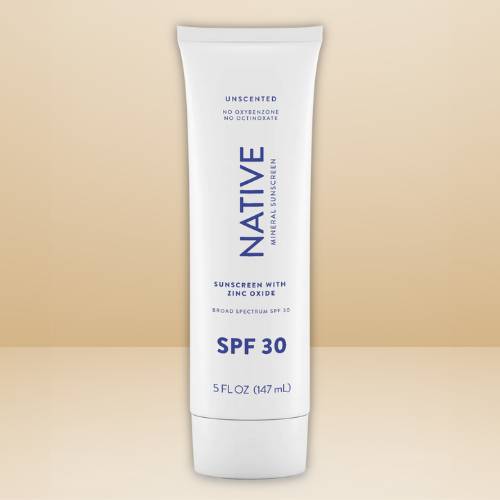
Native Face Sunscreen
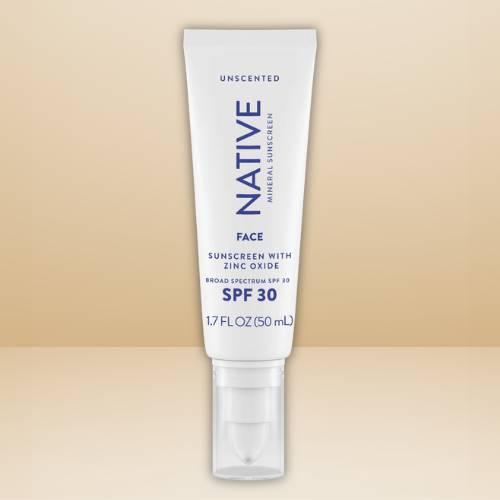
FAQs
Yes, you can use the native body sunscreen on the face. It’s cheaper and shows the same results and effectiveness. The only downside is a bit of white cast from the body sunscreen
Yes, Native sunscreen is reef safe as it does not contain harmful ingredients like oxybenzone, octinoxate, and avobenzone which can damage marine life.
Native sunscreen contains zinc oxide as main UV protective ingredient which is considered safest ingredient to put in sunscreen. So yes, it is one of the safest sunscreens out there.
Yes, it leaves a minimal white cast. However it may be prominent in darker skin tones. It is a mineral sunscreen and all mineral sunscreen contain a white cast.

